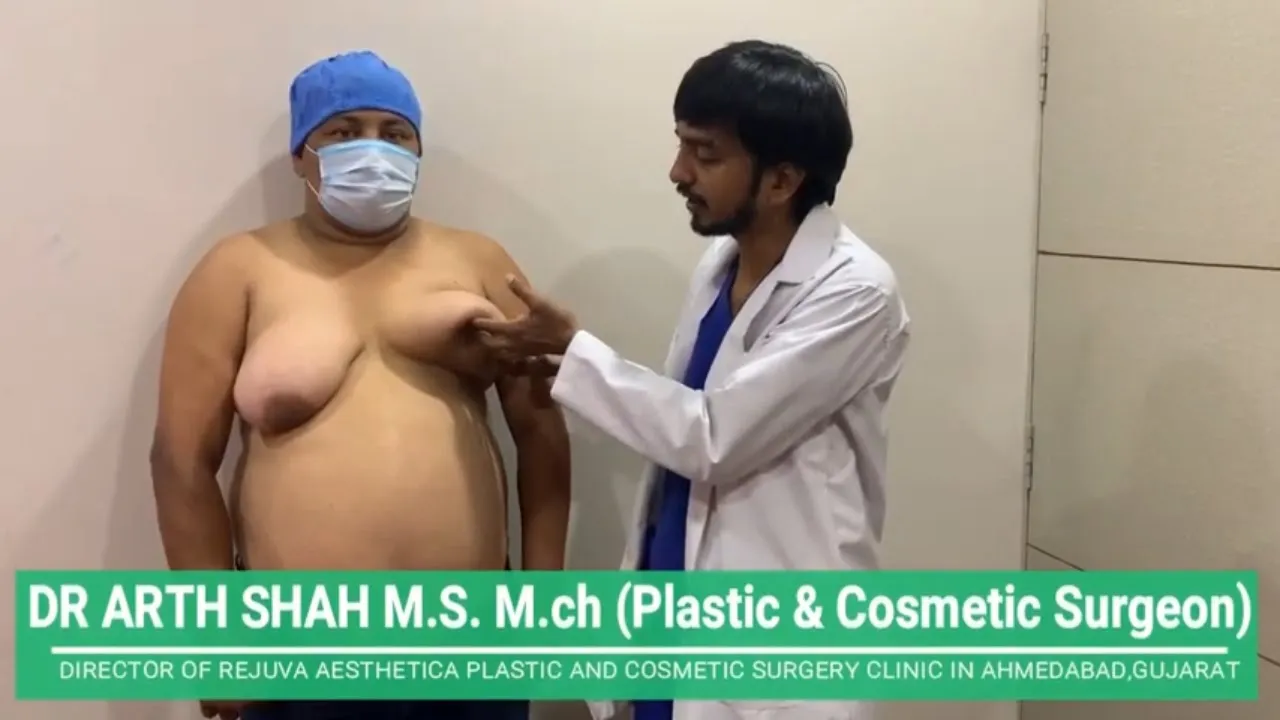
12 Dec Gynecomastia का दुर्लभतम मामला आपने पहले कभी नहीं देखा होगा
Rarest of Rare case of Gynecomastia | गाइनेकोमास्टिया का दुर्लभतम मामला आपने पहले कभी नहीं देखा होगा
What are the causes of breast swelling in males?
There are various causes of enlarged male breasts. Gynecomastia is a benign disorder that causes males to develop breast tissue with glands. General practitioners frequently see it as a result of the patient’s discomfort or aesthetic concerns. The most concerning problem is a breast enlargement diagnosis of breast cancer. Lipoma, sebaceous cyst, dermoid cyst, fat necrosis, and hematoma are some of the other causes. Another condition is pseudo gynecomastia (fat without glandular growth).
How would you differentiate the possible causes?
A rubbery or stiff tissue concentric with the nipple-areolar complex is felt in genuine gynecomastia. It is commonly bilateral, but it can also be unilateral. Breast cancer is distinguished by a stone-hard, immobile, nontender unilateral lump with possible skin dimpling, nipple retraction, nipple discharge, and axillary lymphadenopathy. Bilateral male breast cancer is uncommon (around 1.5 percent of all male breast cancers), while synchronous bilateral male breast cancer is exceedingly uncommon (0.5 percent of all male breast cancers). On palpation alone, it may be difficult to discern between gynecomastia and breast cancer in some circumstances. If there is any doubt, a triple evaluation with mammography and biopsy is recommended.
What are the common underlying causes of gynecomastia? What would you want to elicit from the history and examination in a patient with gynecomastia?
Gynecomastia is caused by an imbalance in the free estrogen to free testosterone ratio, which can be caused by a number of physiological and nonphysiological factors. Newborn babies (0-3 weeks; 60-90 percent), adolescents (10-17 years; 50-60 percent), and older men aged 50-69 years (35-65 percent) are the most common age groups for physiological gynecomastia. Be especially cautious of non-physiological gynecomastia when patients outside of these age groups have gynecomastia that is recent in onset, progressive, or of unknown duration.
Click here to learn more about Laser Treatments. Click here to learn more about Hair transplants in Gujarat
Contact Rejuva Aesthetica now on
Phone : (+91) 7436000990
Website: https://rejuvaaesthetica.com
Email: marketingatrejuva@gmail.com
Facebook: https://bit.ly/2LIYJKu
Google Direction: https://goo.gl/maps/UtXMFVsX6LB2
Address: 102, Himalaya Emerald, Besides IOC Petrol Pump, Near Shivranjani Over Bridge, Jodhpur, Ahmedabad, Gujarat 380015
Make sure to subscribe to our channel, ask your questions below, and follow us on Instagram for live footage and behind the scene sneak peeks: https://www.facebook.com/Drarthshah/
#gynecomastiacasestudy #gynecomastiaexplainedinhindi #gynecomastiaindia




